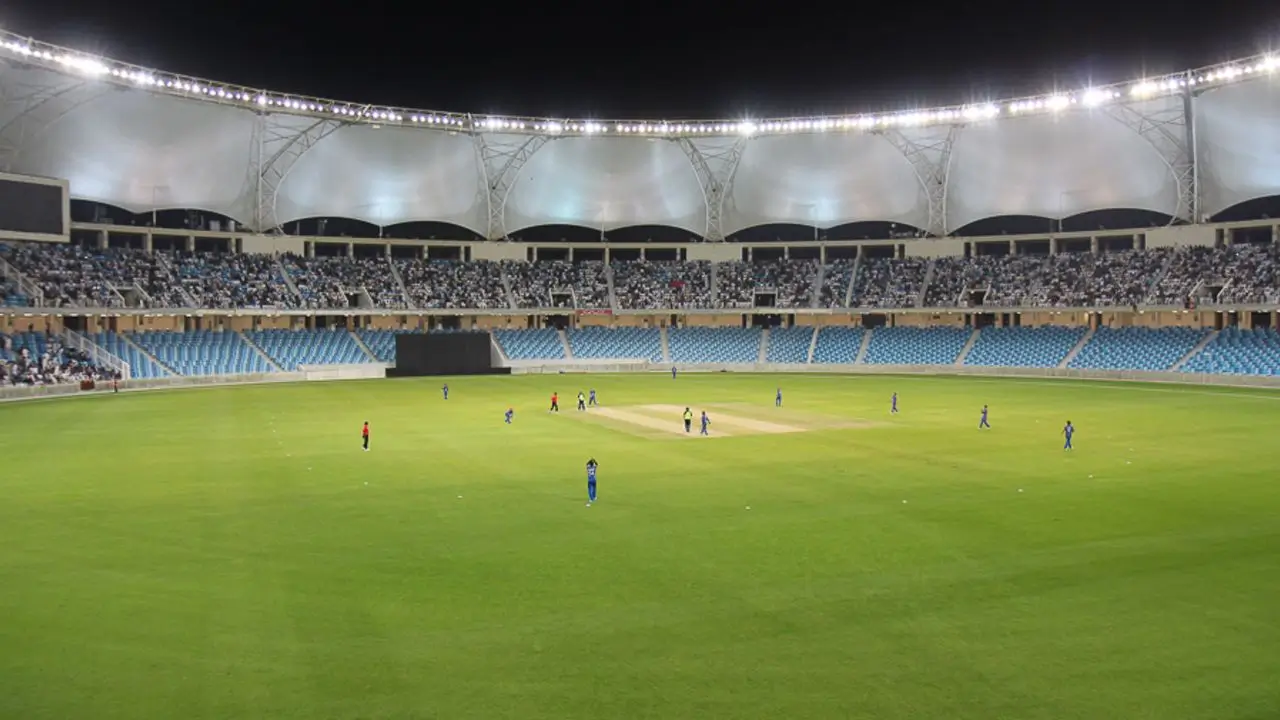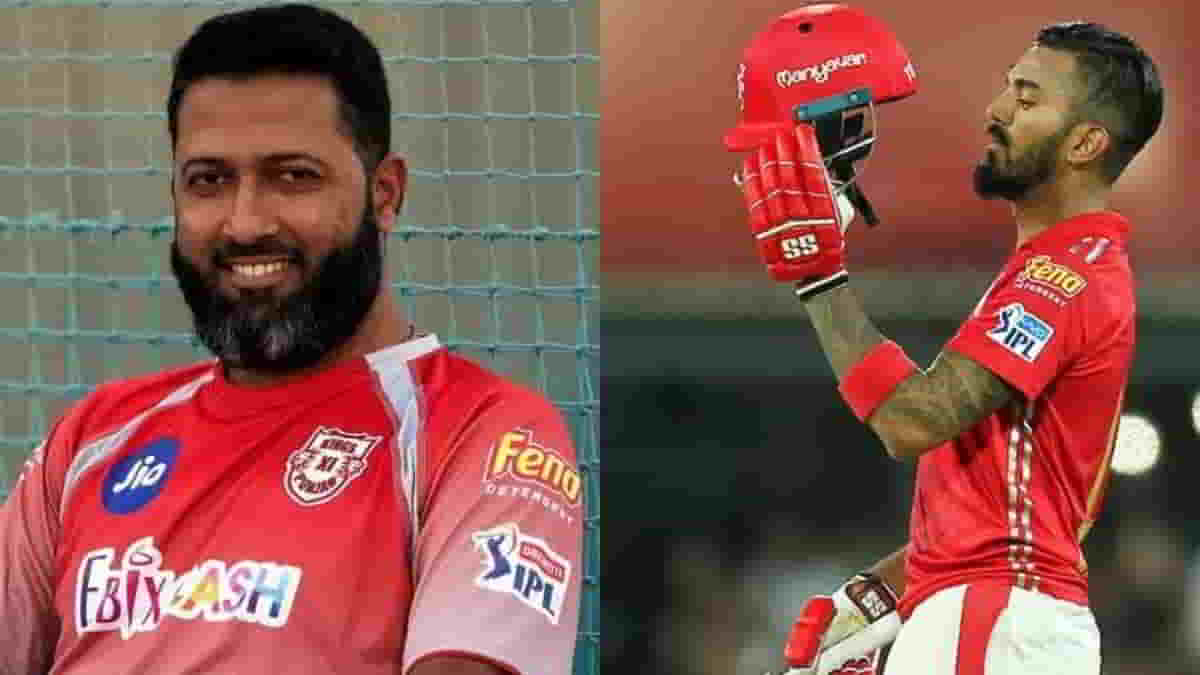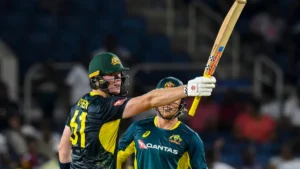India will have to play all their games of the 2025 ICC Champions Trophy at the Dubai International Stadium, a ground which has already seen passionate cricketing action. As the tournament nears, people are asking questions about the kind of pitch it will be and how it will influence the game plans.
With only a few days left until the tournament kicks off, here’s an in-depth look at what India can expect from the pitch, its potential to slow down, and how their squad is poised to adapt to these conditions.
Dubai’s Pitch Conditions: A Mixed Bag for Batting and Bowling
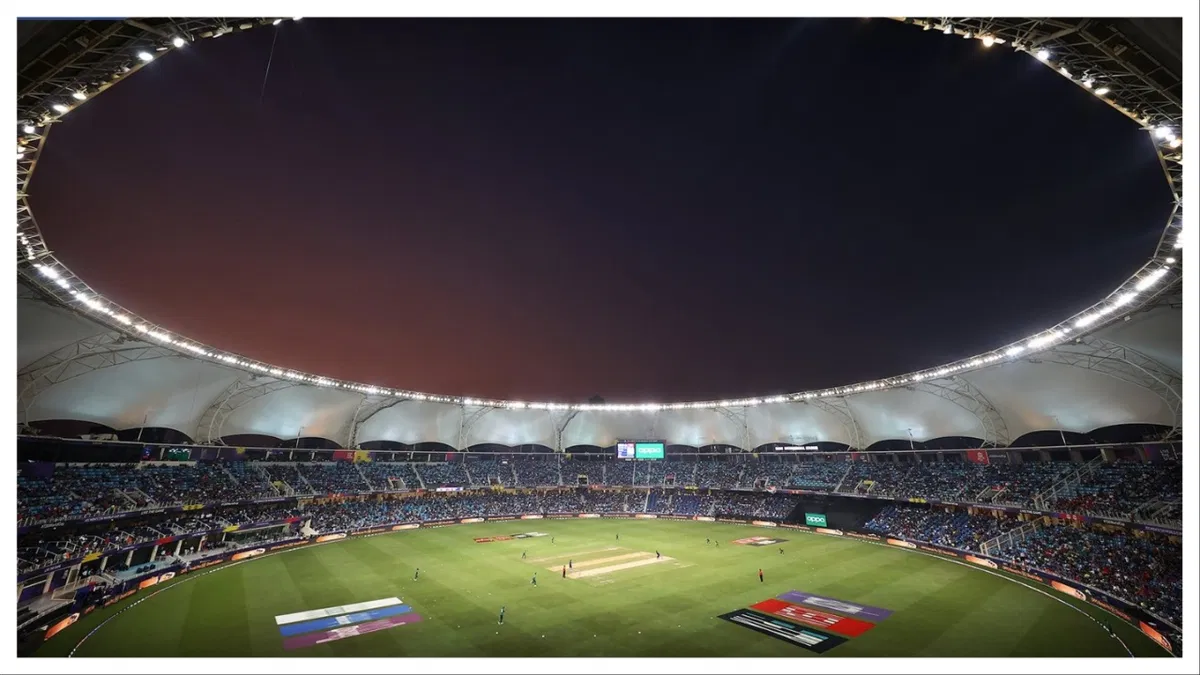
The pitches at Dubai have only recently been used for the ILT20 tournament, which concluded just 11 days prior to India’s first match. It is a question of whether the surfaces will be slower because of the repeated usage of the ground. Matthew Sandri, the head curator of Dubai International Stadium, has confirmed that the pitches for the Champions Trophy will have had a minimum of two weeks’ recovery time since the end of the ILT20.
He is confident that the surface will be prepared properly and designed to suit the needs of a 50-over format so that the conditions of the pitch will provide the best possible play.
Sandri, though, declined to speculate on whether the pitches would get progressively slower throughout the tournament, leaving much to the imagination. Nonetheless, he guaranteed that the surfaces would be in top shape, favorable to a high-class ODI encounter.
The Probable Effect of Slower Pitches on India’s Spin-rich Team
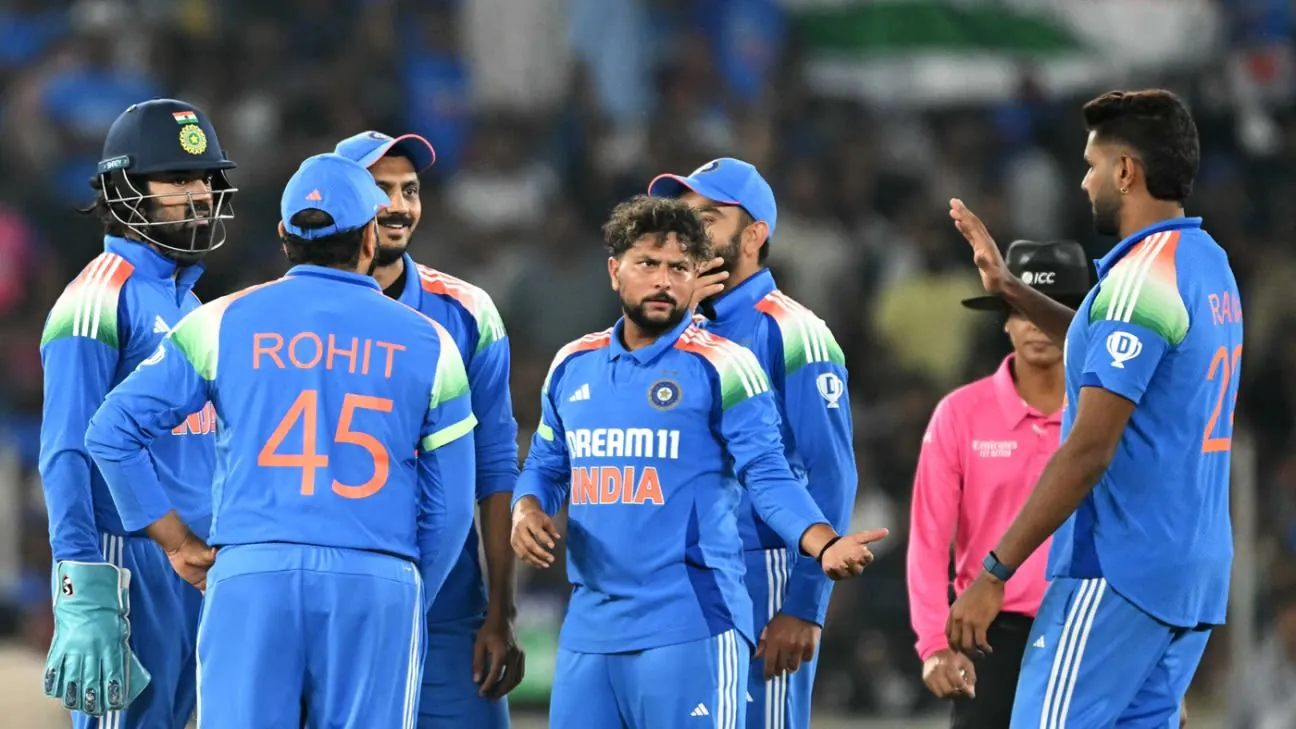
India, one of the favorites for the tournament, is well-placed to cope with likely slow and low pitches. In spite of the loss of their paceman, Jasprit Bumrah, because of an injury, India’s team has an excellent depth of spin bowling that is most likely to do well on sluggish pitches.
The team has five bowlers with spin who are finger-spinner allrounders of three different types—Ravindra Jadeja, Axar Patel, and Washington Sundar. Not only do these players give depth to Indian bowling but also add strength to Indian batting.
Besides these finger spinners, India also possesses two wrist spinners in the form of Kuldeep Yadav and Varun Chakravarthy, who are likely to bring some unpredictability to the bowling attack. On slow pitches, these spinners will give plenty of trouble to rival batsmen. With the existing line-up and the bowling resources at their disposal, India can be expected to play a well-balanced mix of three pacers and three spinners in their initial XI for the competition.
Bowlers’ Performance in the ILT20 and Past ODI Patterns in Dubai
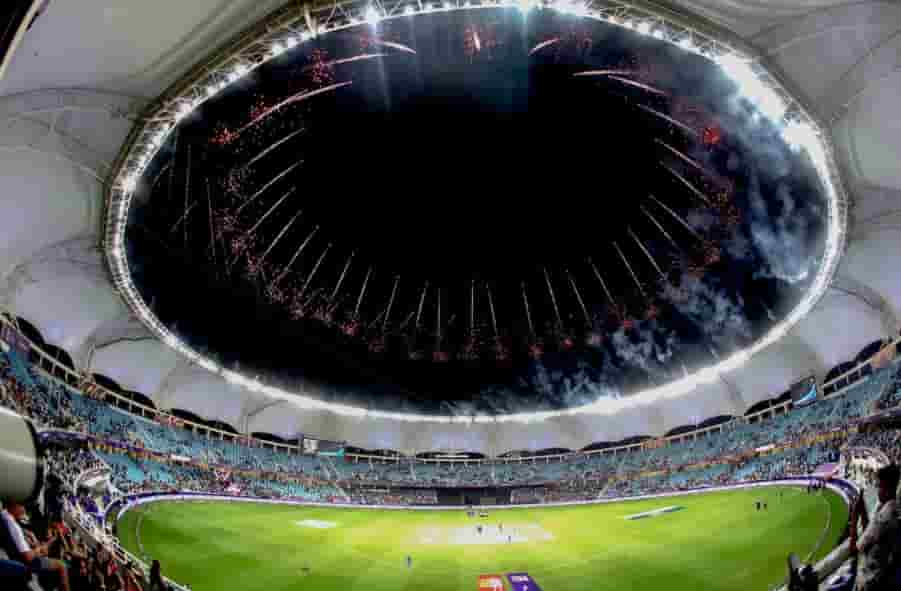
In the recently concluded ILT20, Dubai hosted 15 games, 14 of which were day-night matches. The field conditions presented an even challenge for batsmen and bowlers alike. Stats would have it that pacers averaged 25.06 with an economy rate of 8.08, with spinners presenting similar numbers at an average of 29.16 and an economy of 7.46.
These statistics mean that the pitches in Dubai present a level environment for both styles of bowlers to perform effectively, thus providing the tournament with a more balanced playing field for teams with contrasting bowling capabilities.
But when it comes to ODIs, the recent past of matches in Dubai since 2018 has a different tale to tell. The average first innings score in ODIs here has been 213, with the average winning score being 252. Batting first teams have had an uneven time, winning 14 and losing 19, with one tie and one no result.
This indicates that pursuing totals could be more difficult in Dubai, particularly on slower pitches. Although this pattern is not a definitive pointer towards the manner in which the Champions Trophy will play out, it provides significant insight into the problems that teams might encounter while batting.
Impact of Dew and Weather Conditions in Dubai
The dew problem, which usually makes things difficult during evening matches, is not something that can be a concern during the Champions Trophy, opines Sandri. The curator said that during the ILT20, the dew factor did not have a major impact, despite the fact that the tournament was held under similar circumstances.
With temperature variations between day and night expected to be minimal in Dubai, it seems unlikely that dew will affect the conditions drastically. This could be advantageous for teams as it removes the unpredictability that dew often brings to the game, making conditions more consistent throughout the tournament.
India’s Training and Preparations Ahead of the Tournament
With the tournament on the horizon, India has already started preparing for it. The team has already been training at the ICC Academy since Sunday with the aim of acclimatising themselves to the Dubai environment. India will start their Champions Trophy run on February 20, facing Bangladesh in what could be a thrilling opening game. With experience playing in UAE conditions, India will be heading into the tournament with confidence with their potent spin department and talented squad.
India’s Advantage in Dubai
The Dubai International Stadium, despite its reputation for low and slow pitches in the past, presents India with the chance to use its spin-rich attack to its advantage. With a balanced team and the flexibility to play under various conditions, India is well-placed to play at its best in the Champions Trophy.
While slow pitches are expected, the depth the team possesses in the spin bowling and lack of serious dew issues will assist them in making the best of the conditions. As the tournament unfolds, India’s strategy will probably center on choking opposition batsmen with their spinners, taking advantage of the slow conditions of the pitch, and implementing their strategies to the fullest.
ALSO READ: WPL 2025: GGW vs MIW Fantasy 11 Predictions


